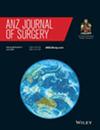Anteroposterior cervical spine canal diameter: exploring ethnic variation between European and Polynesian populations
Abstract
Background
Reduced spinal canal anteroposterior (AP) diameter and AP-transverse diameter ratio have been linked to the development of spinal cord injury and myelopathy. Previously unpublished data has suggested Maori and Pacifica individuals may have narrower cervical spine canals than their NZ European counterparts.
Purpose
We evaluate the existence of potential differences in dimensions of the sub-axial cervical spine canal between New Zealand European, Māori and Polynesian individuals.
Study design
A computed tomography (CT) analysis of 645 intact adult sub-axial cervical vertebrae from 129 patients.
Methods
A total of 645 human sub-axial (C3–C7) cervical vertebrae were analysed radiographically, using 1 mm resolution CT scans to measure AP diameter, transverse diameter and AP:transverse ratio. CT data were obtained from normal trauma scans demonstrating no acute pathology. CT data was reformatted in digital software allowing multi-planar reconstruction (MPR) to increase accuracy of measurements. Statistical analysis was performed using analysis of variance (ANOVA).
Results
A total of 245 vertebrae were from Māori individuals, 245 from NZ European and 155 from Polynesians. There were 455 male vertebrae and 215 female vertebrae. Statistically significant differences were found in AP canal diameter between all ethnic groups, at all spinal levels. The average cervical spine canal was around 2.5 mm narrower in Polynesians and around 1.5 mm narrower in Māori than NZ Europeans. No differences in Transverse canal diameter were observed, however statistically significant differences were found in the AP:transverse ratio at all spinal levels.
Conclusions
Our study, utilizing a normal patient cohort, confirms differences in canal dimensions between ethnic groups.
Clinical significance
Ethnic variation in cervical canal dimensions as herein described, must be considered when defining and diagnosing congenital stenosis. Neglecting to account for these differences may lead to misdiagnosis of congenital stenosis in normal individuals in certain ethnic groups.

 求助内容:
求助内容: 应助结果提醒方式:
应助结果提醒方式:


